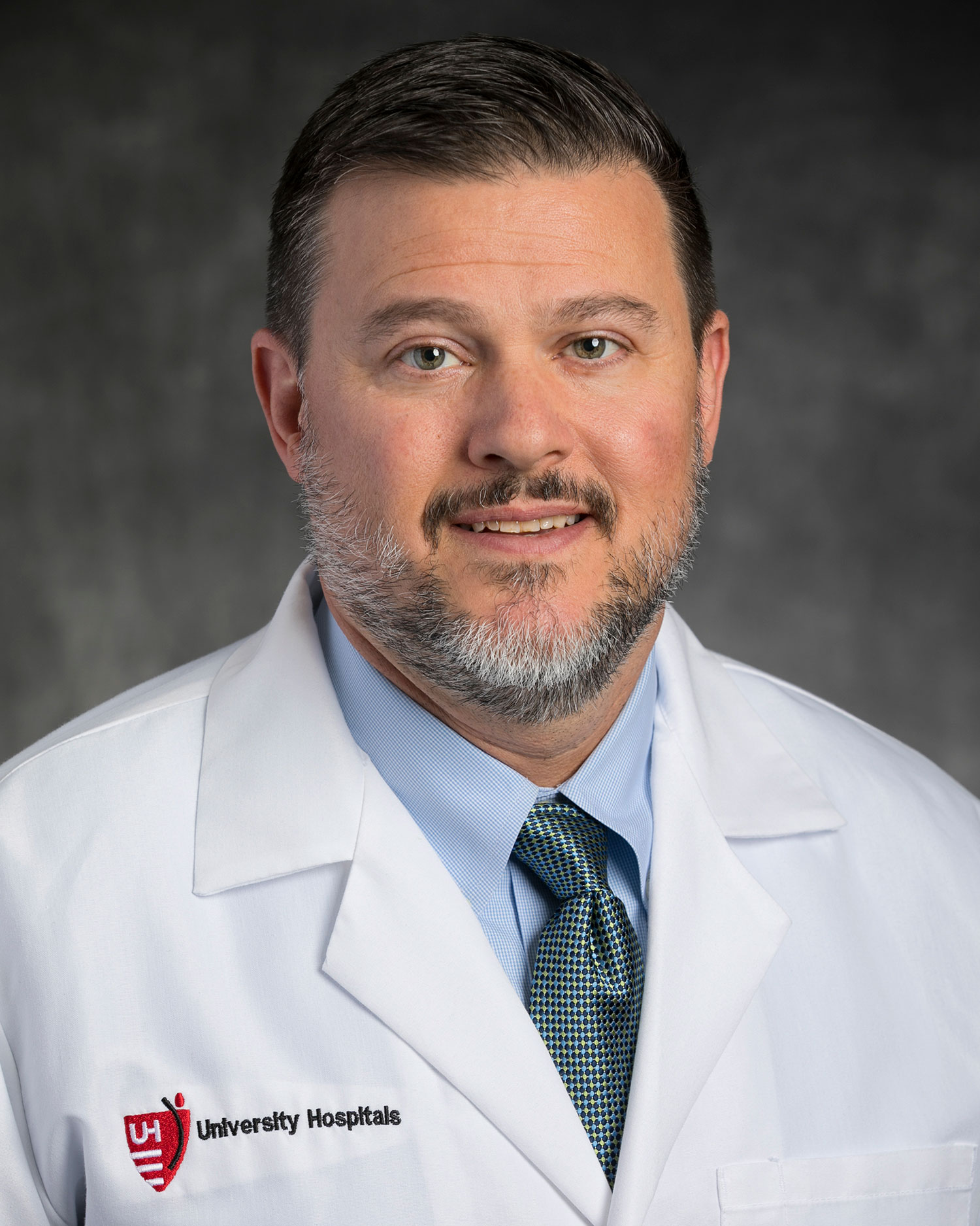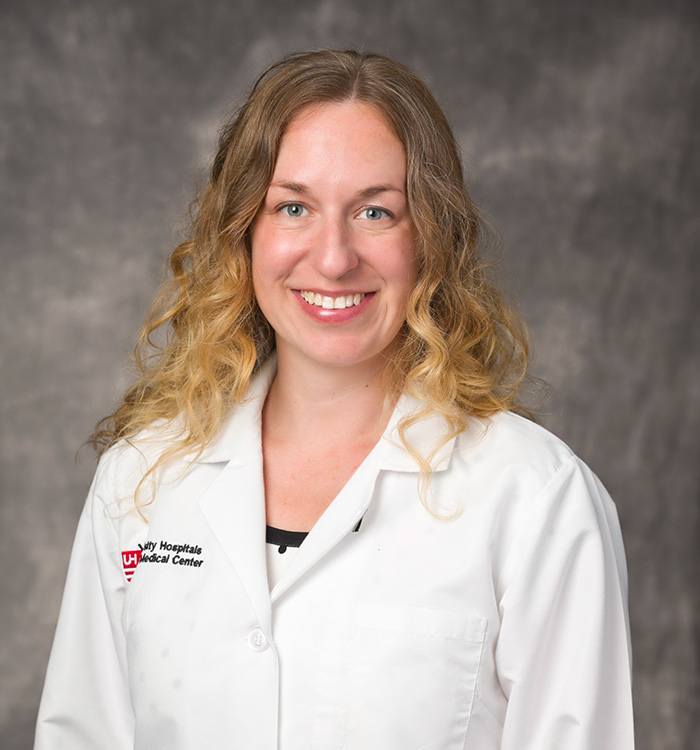Long COVID Clinic at UH Rainbow Babies & Children’s Hospital Serves the Forgotten Patients of the Pandemic
November 13, 2022

Approach is holistic, attracting national attention
Innovations in Pediatrics | Fall 2022
One of the most surprising aspects of the COVID-19 pandemic – and perhaps least publicized – is just how many children and teens who’ve been infected with the novel coronavirus develop persistent fatigue, headaches, abdominal pain, anxiety and other problems weeks or months later – the constellation of symptoms that characterize long COVID. Although rates of long COVID in kids are currently believed to be lower than that of adults, experts still estimate that a half a million American children and teens are affected.
At UH Rainbow Babies & Children’s Hospital, experts in pediatric infectious disease and integrative medicine have been managing an ever-growing roster of these patients for almost two years. What started as just a handful of patients managed in hallway conversations has now grown into a formal Long COVID Clinic at the hospital every Friday, with new patients joining weekly. The clinic was recently profiled by Bloomberg and other national news outlets.
 David Miller,MD, Lac
David Miller,MD, Lac Amy Edwards, MD
Amy Edwards, MD“We've got over 100 kids now in our cohort,” says David W. Miller, MD, Lac, an integrative medicine specialist with UH Rainbow and UH Connor Whole Health. “We're developing a good number of people with whom we are on this healthcare journey.”
Dr. Miller says he suspects the number of patients in the Long COVID Clinic would be even higher if it weren’t for parents, teachers and even some physicians sometimes downplaying the symptoms kids and teens are reporting.
“We do see a number of kids who report that schools and teachers and sometimes parents just think they're trying to get out of work or trying to get out of class or get special privileges,” he says. “They don't understand really what's happening with them. So part of our job is just increasing the awareness that this is a real thing.”
The UH Rainbow Approach to Long COVID
Pediatric infectious disease specialist Amy Edwards, MD, and her colleague Dr. Miller typically spend more than an hour in a first clinic visit with long COVID patients – a necessity driven by the complexity of the condition. Their treatment plan involves targeting individual symptoms with strategies known to be successful in other health conditions, such as chronic fatigue syndrome.
“We definitely consider coronavirus infection to be a post-viral fatigue syndrome consistent with chronic fatigue syndrome,” Dr. Edwards says.
Their first recommendation is always a whole-food, low-sugar diet, having kids avoid added sugars and processed foods.
“It turns out to be a really huge factor in the speed of recovery,” Dr. Miller says.
Second is the concept of pacing – an idea taken from the chronic fatigue syndrome literature.
“We teach the kids to have a very specific strategy of energy management, where they never get themselves to a point of having to push themselves to do something,” Dr. Edwards says. “We have them do what's called “preemptive resting” where they rest before they get tired. If they could do an hour of work, we want them to rest at 45 minutes, so they never get to that place of pushing themselves. The better they can do that, the quicker they also seem to recover.”
Another treatment domain is sleep hygiene.
“These kids get really off-base with their sleep habits,” Dr. Miller says. “Because they're fatigued, they start taking three, four, five, six hour naps during the day, and then they can't sleep at night, and it just develops into this cycle of you never get restorative sleep. So we really highly prioritize good sleep hygiene.”
Depression and anxiety also go hand in hand with long COVID, so seamless referrals to pediatric psychiatrists, psychologists and other mental health professionals are also key parts of the treatment plan. In fact, the UH Rainbow Long COVID Clinic is adding an on-site psychiatrist for a half-day each Friday the clinic meets.
A Plan Going Forward
Dr. Edwards and Dr. Miller are currently compiling data on the first 60 long COVID patients they’ve treated at UH Rainbow, with an eye toward identifying even more insights for what works in terms of treatment. They recently attended the Long COVID National Conference hosted by the National Center for Health Research with other long COVID physicians and researchers, where they shared best practices and continued to build the network of those with expertise to treat the condition.
Data on long COVID in kids will continue to emerge, from these and other fora. For now, Dr. Miller and Dr. Edwards say their best advice for fellow physicians is to be on the lookout for long COVID in all their pediatric patients – not just the athletes and straight A students where the impact of symptoms is the most obvious. And, they note it is critical to take patient complaints seriously.
“It's really psychologically damaging to these kids to be told that they're making it up,” Dr. Edwards says. “One of the things that David and I see time and time and time again is even just meeting with us and getting a diagnosis and hearing that they're not alone takes a weight off of them. In a lot of cases, their anxiety starts to go down almost immediately. Just being in a place where they feel supported seems to help a lot.”
Contributing Experts:
Amy Edwards, MD
Associate Medical Director, Pediatric Infection Control, and
Medical Director, Pediatric COVID Recovery Clinic
UH Rainbow Babies & Children’s Hospital
Assistant Professor of Pediatrics
Case Western Reserve University School of Medicine
David W. Miller, MD, LAc
Integrative Medicine Specialist
UH Rainbow Babies & Children’s Hospital and
UH Connor Whole Health, and
Medical Director, Family and Child Life Services
UH Rainbow Babies and Children's Hospital


